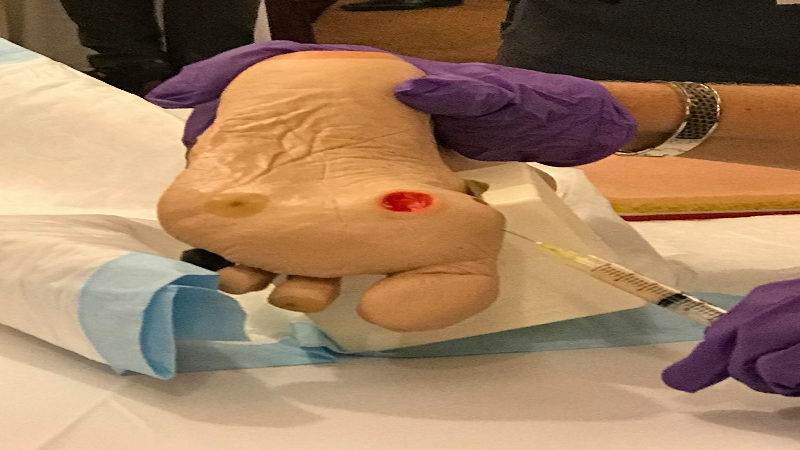Bunions are a common and often painful foot condition that many people struggle with daily. Characterized by a bony bump at the base of the big toe, bunions occur when the bones in the foot shift out of alignment. This misalignment can cause pain, swelling, and difficulty finding comfortable footwear. While surgery is sometimes necessary, bunion braces offer a non-invasive solution to help manage pain and support bunion care over time.
What Are Bunion Braces and How Do They Work?
A bunion brace is a specialized device designed to relieve pressure on the bunion by realigning the big toe and improving foot mechanics. These braces are typically made of soft, flexible materials and are worn either during the day or overnight to help reposition the toes. While bunion braces don’t correct the underlying bony deformity, they provide symptomatic relief by reducing pain and preventing further misalignment.
The main purpose of a bunion brace is to limit the movement of the big toe and reduce friction against the shoe. When worn regularly, bunion braces can help reduce pain and slow down the progression of the bunion. They are especially helpful for individuals who have mild to moderate bunions and want to avoid surgery or other invasive treatments.
If you’re considering bunion braces as part of your bunion care routine, it’s important to consult a reliable podiatrist to ensure you’re using the right type of brace for your specific condition.
The Benefits of Using Bunion Braces
1. Pain Relief
One of the primary benefits of bunion braces is the relief they provide from pain and discomfort. By realigning the big toe and preventing excessive pressure on the bunion, the brace can reduce inflammation and irritation in the area. This leads to less pain while walking, standing, or even resting.
2. Improved Foot Alignment
In addition to providing pain relief, bunion braces help improve foot alignment. By gently pulling the big toe back into its natural position, the brace can help prevent further misalignment of the toe and joint. This can be particularly beneficial for people who are at risk of developing more severe bunions or who already have mild bunions and want to avoid worsening the condition.
Proper foot alignment is essential not only for bunion care but also for maintaining overall foot health.
3. Prevention of Further Bunion Progression
For individuals with early-stage bunions, wearing a bunion brace can be an effective way to prevent the condition from worsening. Since bunions are progressive, they tend to get larger and more painful over time. By using a bunion brace consistently, you can slow down the progression and reduce the likelihood of needing more invasive treatments, such as surgery.
4. Comfort and Convenience
Bunion braces are designed to be comfortable and easy to wear. Many braces can be worn inside shoes, making them a convenient option for people who need to wear them throughout the day. Some braces are designed specifically for nighttime use, providing continuous support while you sleep without interfering with your daily activities.
Bunion Braces vs. Surgery: Which Is Right for You?
While bunion braces are an excellent option for managing mild to moderate bunions, they do not provide a permanent solution for the condition. If you have a severe bunion or if your symptoms are not improving with conservative treatments, bunion correction surgery may be necessary.
Surgical treatment for bunions is generally recommended when pain and discomfort significantly impact your quality of life, or if non-surgical methods, like bunion braces, do not provide adequate relief. There are different surgical procedures available, ranging from simple removal of the bunion to more complex surgeries that involve realigning the bones in the foot.
How Bunion Braces Fit into Your Overall Bunion Care Plan
Incorporating bunion braces into your bunion care plan can be a highly effective way to manage your symptoms and prevent further progression. However, braces should be used in conjunction with other treatments to achieve the best results. For example, your reliable podiatrist may recommend custom orthotics to provide additional support, as well as stretching exercises to improve flexibility and reduce strain on the feet.
Regular visits to a podiatrist are crucial for monitoring the condition of your bunions and adjusting your treatment plan as necessary. With proper care and the right treatment plan, bunion braces can significantly improve your comfort and quality of life.
Take Action for Long-Term Bunion Relief
If you are struggling with bunion pain, bunion braces can be an essential tool in your bunion care routine. While they may not correct the bony deformity, they offer effective pain relief, improved alignment, and prevention of further progression. By working with a reliable podiatrist, you can develop a comprehensive treatment plan tailored to your specific needs and enjoy long-term relief from bunion symptoms.
For expert guidance and care, reach out to a reliable podiatrist at Valley Foot Care, Inc. to discuss your bunion treatment options.

